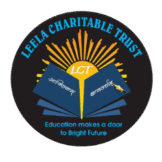How to Become a Genius with Neuroscience.
Training Modules
Module 1: Neuroscience of Genius Thinking (60 minutes)
Objective: Understand brain processes underlying exceptional cognition.
- Overview:
- Role of the prefrontal cortex (PFC) in executive functions like planning and decision-making (Miller & Cohen, 2001).
- Hippocampus for memory and pattern recognition, key to creative insights.
- Default Mode Network (DMN) for divergent thinking and creativity (Raichle, 2015).
- Impact of neuroplasticity in rewiring the brain for enhanced intelligence.
Outcome: Participants learn how the brain supports genius-level thinking.
Module 2: Boosting Focus and Cognitive Skills (60 minutes)
Objective: Enhance concentration and mental agility with neuroscience techniques.
- Overview:
- Activating dorsolateral PFC (dlPFC) with Pomodoro technique (25-minute focus blocks) for sustained attention.
- Techniques to reduce amygdala-driven distractions:4-4-4-4 box breathing to calm stress.Dual n-back training to improve working memory.
- Using mind mapping to engage visual cortex for creative problem-solving.
Outcome: Participants develop tools to sharpen focus and cognitive flexibility.
Module 3: Creativity, Resilience, and Lifelong Learning (60 minutes)
Objective: Foster innovative thinking and sustained cognitive growth.
- Overview:
- Stimulating DMN through divergent thinking exercises (e.g., brainstorming multiple uses for an object).
- Role of sleep and exercise in memory consolidation and neurogenesis (hippocampal growth).
- Managing stress with mindfulness to optimize amygdala and PFC balance.
- Building a growth mindset to leverage neuroplasticity for lifelong learning.
Outcome: Participants cultivate habits for creativity, resilience, and continuous learning.
